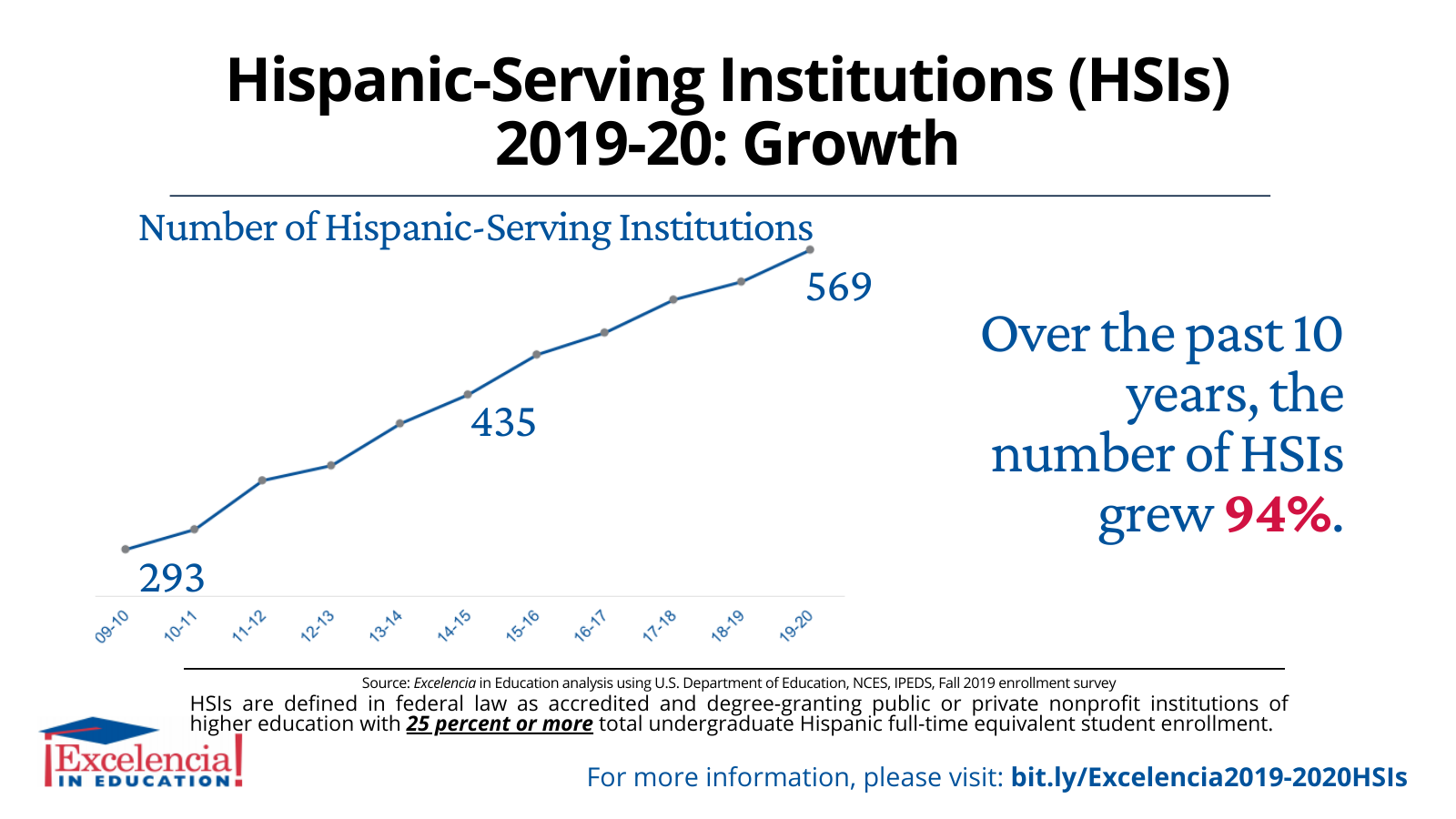You have /5 articles left.
Sign up for a free account or log in.

andresr/iStock.com
Hispanic-serving institutions are growing their numbers, according to the latest data set from Excelencia in Education, released Tuesday.
In 2010, there were only 293 such institutions, which count Hispanic students as at least 25 percent of their enrollment. In the latest release, which collected Education Department data from the 2019-20 academic year, that number rose to 569, a 94 percent increase. That list has grown by 30 institutions since the previous year, to include Indiana University Northwest and Mount Mary University in Wisconsin. The number of states with at least one HSI also increased in the last data set, from 27 to 30, plus Puerto Rico and the District of Columbia.
Deborah Santiago, CEO of Excelencia in Education, a nonprofit focused on Latino students, said that part of that increase is due to the demographics of the Hispanic population.
“What we’ve paid attention to is the youth and growth of the Hispanic population. We are in that traditional college age that is very essential,” she said. “Students tend to enroll close to where they live, and as the population has grown and we’re more college-aged, we’re seeing that reflected.”
But Santiago noted that there has also been intentional recruitment on the part of some colleges and universities. 
“We are seeing some effort from institutions to recruit more Hispanic students because they are the growth population,” she said. “There’s the forces of demography and geography, and then there’s some efforts at intentionality and outreach that are all at play.”
Many regional institutions have been grappling with what some have called an oncoming “demographic cliff,” a decline in the number of people graduating high school, particularly within populations that are most likely to attend college, such as white students in the Northeast. As enrollment goals become harder to reach, some institutions have made it a special focus to recruit Hispanic students and become HSIs. Marquette University, for example, which has recently been downsizing in preparation for the demographic shift, began an initiative to become an HSI in 2016 and in the time since has increased Hispanic enrollment as a share of all students from roughly 11 to 15 percent. Officials have said the initiative will make Marquette more welcoming and inclusive.
Some higher education experts note that that strategy is not likely to work forever. The Hispanic population in America is also due for a decline in traditional college-age people. The shift is just likely to happen later.
The latest data were collected before the pandemic and thus don’t show the impact of that disruption on the HSI space. But other data from the National Student Clearinghouse suggest that, despite past progress, enrollment of Hispanic students is down in the past year.
“We have seen with the National Student Clearinghouse data the significant adverse effect the pandemic has had on Hispanic student enrollment,” Santiago said. “We were growing over the last 10 years, and in the pandemic I think we lost five years’ worth of the progress we made in trying to close enrollment gaps.”
Preliminary numbers from fall 2020 and spring 2021 suggest that enrollment of Hispanic undergraduates is down about 5 percent compared to those semesters last year. Communities of color were disproportionately impacted by the pandemic, and, Santiago said, several HSIs that appeared on this year’s list have recently closed their doors. While they make up about 18 percent of higher education institutions, HSIs educate about 67 percent of Hispanic students.
HSIs could be in for some more funding in the coming years if Congress passes President Biden’s infrastructure package. The bill, if passed as introduced, would bring millions of dollars in funding for facilities and research and development activities to minority-serving institutions and community colleges.
Santiago said Excelencia’s data are meant to be a starting point and to encourage higher education into thinking not only about how to enroll Latino students, but how to serve them.
“Enrolling students is absolutely a necessary precursor to graduating them,” she said. “But the real question for us is, ‘How are you intentionally serving these students?’”








